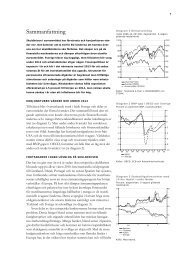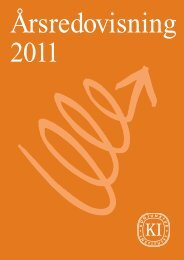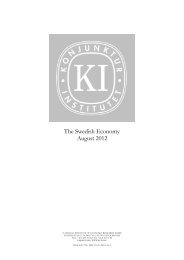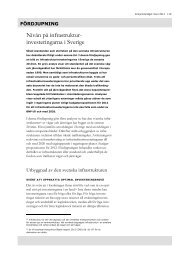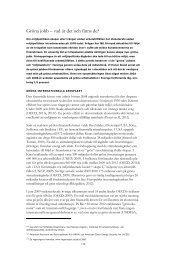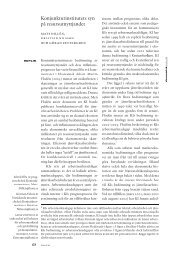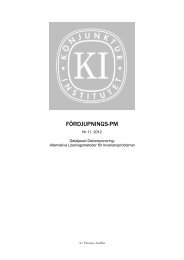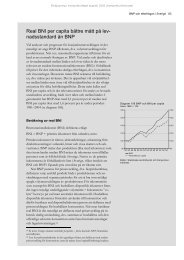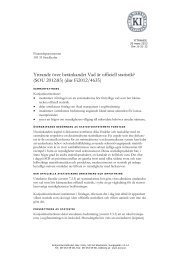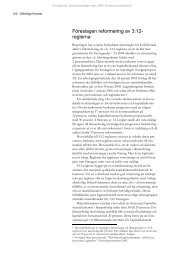Central Bank Forecasts of Policy Interest Rates - Konjunkturinstitutet
Central Bank Forecasts of Policy Interest Rates - Konjunkturinstitutet
Central Bank Forecasts of Policy Interest Rates - Konjunkturinstitutet
You also want an ePaper? Increase the reach of your titles
YUMPU automatically turns print PDFs into web optimized ePapers that Google loves.
8cial-market instruments but may also reflect different outlooks about the economy and policy rate.That is, at times the central bank’s policy-rate path may not be fully credible. When the forecastpaths do diverge, one can ask which will prove to be the better forecast and on which path economicagents would do best to rely. At any given time, the answer to those questions will dependon a range <strong>of</strong> factors but this paper aims to present some facts from the realised sample so far. Ourresults show that neither the central banks’ forecasts nor market expectations pass simple tests forunbiasedness and efficiency but that there are generally very small differences in forecasting precisionbetween central banks and market expectations.The rest <strong>of</strong> this paper is organised as follows. In Section 2, we describe the data used. Section 3presents the empirical analysis and, finally, Section 4 concludes.2. DataNorges <strong>Bank</strong>’s forecasts <strong>of</strong> the sight deposit rate are those published in the Inflation Report or Monetary<strong>Policy</strong> Report from October 2005 to June 2012. 3 Similarly, Sveriges Riksbank’s forecasts <strong>of</strong> therepo rate are those published in the Monetary <strong>Policy</strong> Report and Monetary <strong>Policy</strong> Update from February2007 to July 2012. Data on market expectations inferred from financial market data were providedby Norges <strong>Bank</strong> and Sveriges Riksbank.In our empirical analysis, we focus on forecast performance at three different horizons: one quarter,one year and two years. Figures A2 to A4 in the appendix show the forecast errors – defined as , where it his the policy rate at time t h and it h|tis the forecast made ateth| tith ith | ttime t – at the different horizons in Norway. Figures A5 to A7 in the appendix show the correspondingforecast errors in Sweden.Figure 1 shows the policy interest rates in Norway and Sweden from January 2005 to September2012. As can be seen, the sample employed for our evaluation includes the tightening phase whichended in late 2008, the dramatic cuts <strong>of</strong> late 2008 and early 2009 and the period <strong>of</strong> very low rateswhich ensued.3 Norges <strong>Bank</strong> changed the name <strong>of</strong> their main report from Inflation Report to Monetary <strong>Policy</strong> Report in 2007.



